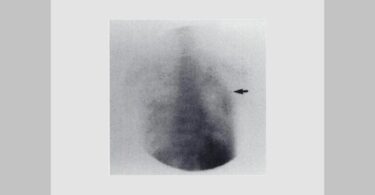
Her Story
“Every passing moment is the thought that something ‘bad’ is going to happen and I have to constantly fight the thought. In order to do that I keep myself physically busy in the house. I feel that every idle minute would bring back fearful thoughts.” One such thought narrated was that of ‘killing her husband someday in bed. Another example was that “something will go wrong with me; I don’t know what”. She found it difficult to explain her fears…said they were like an anxiety rush that came on suddenly while she stood waiting for her children at the bus stop or when alone at home. Trivial thoughts such as “Why did the bus come in late today?” would trouble her not only for that moment but for days. “I do yoga and meditation to keep my mind occupied and away from a thought. Keeping myself busy, lets the thoughts fade…but they are there, constant”. She had fear of the dark, of being alone, of getting some incurable disease. She had fear of death and dying.
She was emotional and crying throughout the narration. Her belief in God was strong, and she was very religious. She recited prayers in between her activities to keep herself busy. She also believed in ‘black magic and feared witch spells being cast on her’. She had strong beliefs, and it was difficult to convince her otherwise. When asked about suppressed feelings and if she expressed her thoughts, she said she usually did. If she wanted something she would ask for it and if she didn’t agree with something she would express her opinion. For instance, when it came to the children she knew what was best and she went for that. She preferred things in the house in a particular way and was adamant to have them in that manner. At times she said there are arguments over this with her husband in terms of her fastidiousness; “it is the thoughts that trouble me not my desires”.
She said she had an arranged marriage and they got along well. She then mentioned the fear of her husband leaving her because of her of fears. She shared her fears and anxieties with her husband who said they were silly, as everyone had fears of dying and that the thoughts would pass away. However she did not enter into deep discussions about her fear with him. She complained of him being a bit indifferent to her and to these thoughts she had.
Two years ago she had visited a psychiatrist and was on anti-depressants for awhile and took sleeping pills at night. She had suicidal thoughts. She seemed to be quite secretive about this and did not provide more details.
When asked about her children, she said she liked to be involved with them as it helped her forget her thoughts.
General observations: Client appeared to be very guarded in what she said. On certain occasions she teared up and was consolable. I noted restless of legs and constant motion (tapping of her heel).
General health: Thirst poor , appetite average, vegetarian. Sleep is difficult, due to clouding of thoughts at rest. Appearance: lean and lanky.
INITIAL ASSESSMENT OF THE CASE
This case had many symptoms of the mind with persistent thoughts, fear and anxiety. I decided to evaluate this case on the basis of the presenting mind symptoms alone, because they were so predominant in the case.
I considered following characteristics in the repertory as they were more closely matched this client.
Repertorisation with the aid of ‘Kents Repertory’
- Mind, anxiety, fear with
- Mind, fear, happen something will
- Religious affections
- Mind, occupation amel
- Mind, thoughts persistent
- Mind; talking, conversation; secretive
- Extremities; trembling, hand, fingers
- Stomach; desires salt
- Stomach; thirstlessness
The remedies that came close to each other and were considered a good match for this case were Ignatia, Pulsatilla, Natrum Muriaticum and Sepia.
Ignatia, came up as a strong remedy for this case. It suited her as she was easily excited, but mild disposition, was quick to perceive, had dark hair and skin. One could argue long-standing grief or disappointment, however the client was not very forthcoming of the underlying cause of her thoughts. I did not get a cause pertaining to loss of a near or dear one or even a deeper disappointment in love. Also missing was the impulsiveness, impatience and contradictions that are so marked in Ignatia. The client was quite well known in society and had made friends in a short period of time in a new place (time proved me right here as I got more references later from her).
Pulsatilla, Natrum Muriaticum and Sepia: I was convinced that the client belonged to one of these remedies as she presented with symptoms of each, some prominent, some not. Pulsatilla was considered because of the friendliness and mild nature of the client, however she was neither timid nor impressionable, nor slow or indecisive. The marked need of being consoled was not seen in her. Changeability, desire for open air, chilliness that defines Pulsatilla did not stand out as the triad in this case. She seemed to have passed the stage of Pulsatilla, making me think over the two other closer remedies Natrum Mur and Sepia. Natrum mur seemed to be a close match as I evaluated the case further. It covered the persistent thoughts, fear of the unknown, religiousness, anxiety and restlessness. The presence of disappointment in love/husband if it was there, would be covered by this remedy. The desire for salt and thirstlessness did strike in favor of this remedy. Sepia is known to be a more of a chronic remedy and although it did cover the persistent thoughts and being better when occupied, she didn’t seem to reach the stage of indifference towards loved. The presence of indifference as prominent as it is in Sepia didn’t come out through this client.
INITIAL PRESCRIPTION
I prescribed Natrum Mur 1M three doses to be taken over three nights. A follow-up was scheduled after a month’s time. Given the anxiety of the patient and her insistence on emergency medications for her thoughts, a vial of placebos was provided with instructions to contact the office if need be. She was advised to visit a neurologist for evaluation of early onset of Parkinson’s disease.
FOLLOW-UP
June 14th 2006
There were absolutely no changes in the client’s symptoms. She continued to struggle with the same thoughts and confessed to be more irritable than before. She would yell at her kids and would get into arguments with her husband more often. When asked if she had any physical complaints, she said her trembling fingers was the same. At this time she stretched her fingers out and the shaking in the right side seemed to be more prominent but overall there seemed to be less trembling than what I recollected. As if guessing my thoughts, the client noted that trembling is more when she is “emotional”. In the first two weeks following the medication she had a running nose. She said this bout of cold was unusual and unexpected. Her kids had no cold and she couldn’t understand from where she could have got it. She said all she had was running nose, there was no itching in the throat or head congestion. It stayed for a couple of days and passed off by itself. She did not take any medication for the cold. Anxiety as to what will happen next, restlessness and fear of bad news continued to be present.
Assessment of the case: The presence of coryza following the intake of a deep acting psoric remedy indicated the acting up of the miasm. There were no further differences noted with the exception of trembling of the fingers. Since the client continued to have persistent thoughts, anxiety and restlessness the approach was to wait and watch.
Follow-up remedy: I decided to provide no medications at this time and asked her to follow-up after 15 days. A vial of placebo provided.
July 1st 2006
She seemed to be more relaxed. Her legs were not restlessly shaking and she was smiling more than usual. She explained that she didn’t have many anxious thoughts in the last 15 days but there were ‘passing thoughts’ that were not troubling her. Added to these were other thought complexes, very minute in nature. However in the past 15 days she said she was able to dismiss the thought and process it and the thought passed away within 15 minutes and wasn’t there for the rest of the day. Although the sting of thoughts had not stopped they seemed to be “controlled”.
At this visit I had her evaluated by a Physiotherapist for strengthening exercises, She readily consented to get his advice. Her physical strength was evaluated especially her upper extremities. As expected it was too early to say if this was Parkinson’s disease and difficult to negate it based on patient’s family history. Shet was encouraged to get a neurologists opinion.
Assessment : An increase in client’s confidence despite the minor improvement in the mental symptoms was considered to be a major step towards improvement.
Follow-up remedy: No remedy was considered at this time. Client was asked to follow-up in a month’s time.
September 2nd 2006
Client followed after almost 60days. She was anxious about everything related to a visit by her relatives. She felt she was not confident and good enough. Consoling her helped at the moment and she managed to stop crying. She said her moods fluctuated during the day and at times she was fearful, once again of the unknown.
Physical complaints included leucorrhoea which was troubling her since a month and she’d not mentioned it prior. She stretched her hand out to show the trembling and the shakes that seemed threefold compared to her first visit. She said it was just because she is crying lately. She had not even paid attention to it as she was busy with everything else. She said she had set up an appointment with a neurologist.
Evaluation: Given the client’s constant weeping and ease following consolation, Pulsatilla was considered. Pulsatilla fit the metnal picture at this time. I noticed that her persistent thoughts of Parkinsons disease were replaced by acute thoughts/fears of current situations. Her previous fears were of impending doom in the future, were now replaced by what will happen now.
Pulsatilla 200, single dose was given in the clinic and she was asked to follow up within a week.
September 10th2006
Received a call from the client. She said that her visit to the neurologist was uneventful. He told her that she had a few early signs but they were very mild and that she may continue with homeopathic treatment and do a half-yearly follow-up with him.
Evaluation: The neurologist got in touch with me and mentioned that he had evaluated her per the UPDRS (Unified Parkinson’s Disease Rating Scale) and she most likely had ‘Young onset Parkinson’s disease (YOPD)’ which is defined as idiopathic Parkinson’s disease (IPPD) presenting in individuals between 21 and 40 years of age. The cardinal symptoms of Parkinson’s at any age are almost always unilateral at onset and include the classic signs and symptoms of resting tremor, rigidity, and/or bradykinesia. In her case it does look to be more prominent in her left fingers than the right. Symptoms typically progress to the unaffected side over time. However, the side on which symptoms begin remains more affected. Currently she did not exhibit any daily work-related issues and/ or disability.
The standard pharmacologic treatment for YOPD is dopaminergic medications i.e. dopamine agonists. Patient refused to begin medications and reported to him that she would prefer to be on homeopathic treatment.
October 20th 2006
Client came in with stories of her in-law, about their health concerns and how she is taking care of them. She once again seemed to be in control and did not once mention her thoughts and anxiety in the whole 30 minutes. She showed me her fingers and said the shakes were around 10-15% better.
Evaluations From the beginning to now (6months of treatment ) I charted down patients progress as follows:
- Nat mur to begin with and acutely prescribed Pulsatilla
- Anxiety – improved >50%
- Tremors – improved ~15%
- Depression – improved >50%
- Patient’s approach towards disease/ life – improved overall
- Patient’s courage to face the disease diagnosis and live with it – improved (to begin with she had the fear ….with confirmed diagnosis….she faced it with courage)
I believed this was the miasm unfolding……I believed the patient was coming out of the sycotic and moving towards the psoric miasm. This to me was a sign of improvement. No further remedy was considered or given and client was requested to follow-up once every month.
In the next 2 years patient continued to follow-up with me with minor to sporadic improvement in her tremors but the good news was that they had not progressed. She was evaluated every six months by her neurologist. Most of her complaints regarding her anxieties and fears had markedly improved since her first visit. She had started going out more often and had even started a wife-club and is having much fun with her new friends. Natrum mur has since been repeated twice in May 2007 and then later in January 2008 when the client was in Status Quo – no improvement was seen and a kind of plateau had reached. She was then visiting me once every three months. In the fall of 2008 client stopped making appointments.
A few months later I ran into the client in a shopping mall and she gave me a summary of all the changes that she had now brought in her life and how successful she was at them. She said the thoughts are there but they are not much of a concern at the moment and she’d come in if they worsened. She discussed her concerns about her in-laws health and somehow seemed quite calm talking about them.




Dear dr
what about trembling of fingers ?
thanks